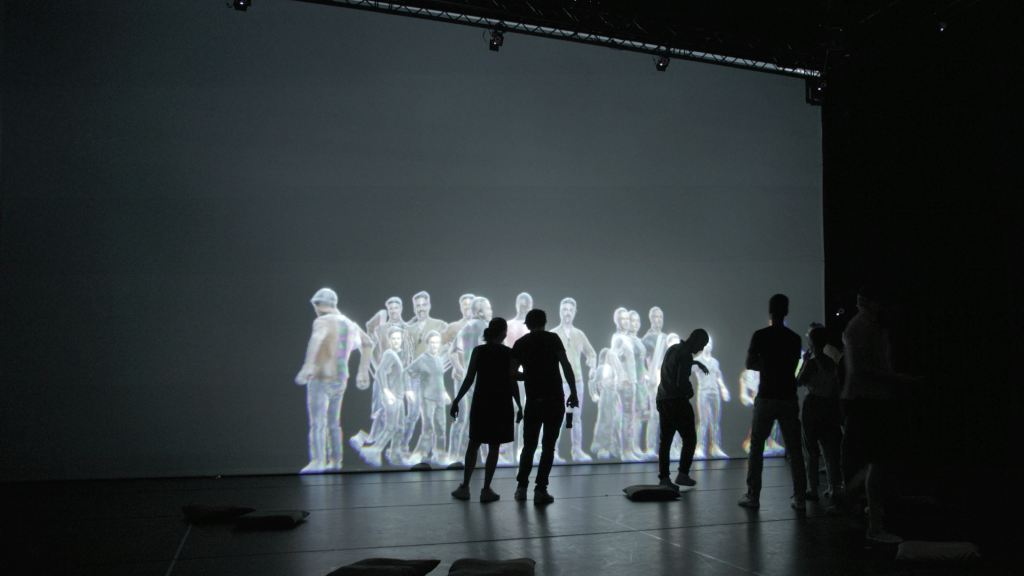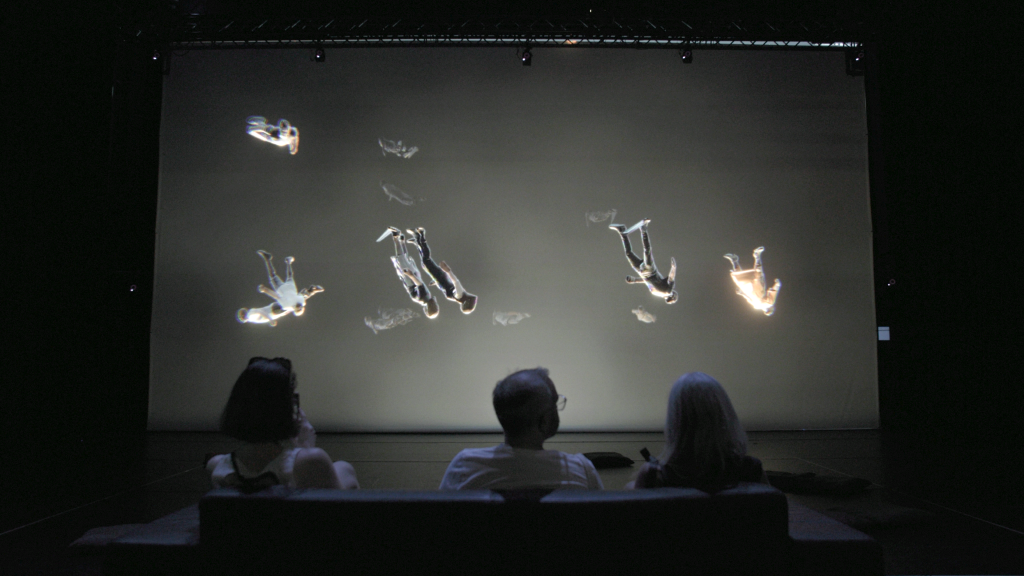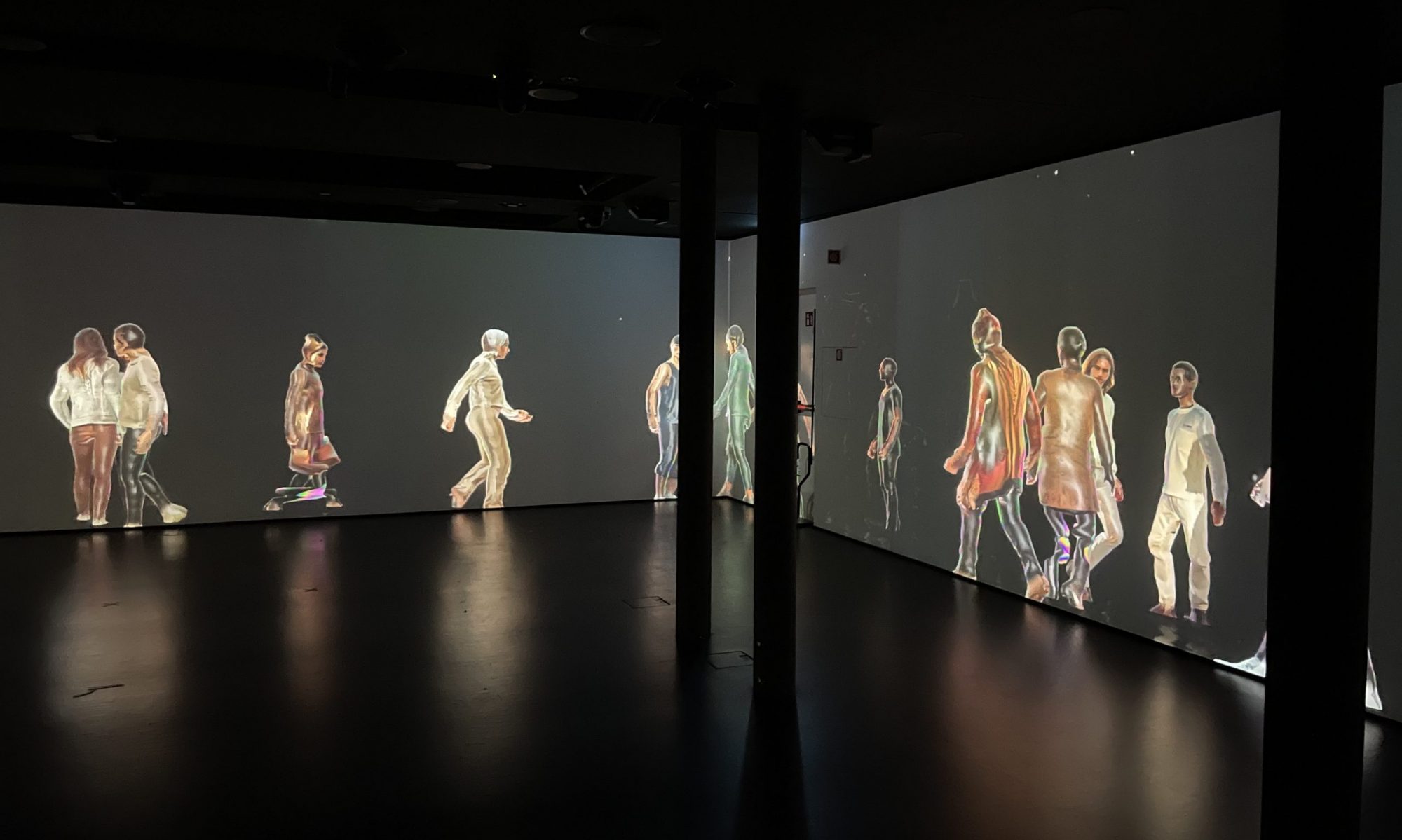
reconFIGURE is a real time installation exploring how diverse human bodies are reimagined by computing machines. The visitors’ frontal image is first captured by a camera, and using machine learning, transformed from a 2D image into an animated 3D avatar in a matter of seconds. Appearing in the projection on the wall and an unsettling sonic atmosphere, these doppelgaengers gradually seem to move like strange creatures in an aquarium, where hidden forces throw them around like rag dolls. As the visitors’ encounter their re-animated selves on the screens, they bear witness to the mutations generated by the machine processes. Thus, through the transformation of bodies by way of increasingly black boxed AI systems, reconFIGURE probes how we will negotiate the truth between our own image and that image as reimagined by machines.
reconFIGURE probes how computational systems capture, represent and transform human bodies [Hansen 20121; Hayles 20002]. In art theory and criticism, this theme has long been examined through concepts such as “technical exteriorisation” [Wegenstein 2010] and the “cyborg” [Haraway 20133]; “data bodies” [Salazar 20234]; and (3) the “undigital image” where a disconnect is felt between a subject and their body through computational image making [Zylinska 20205]. At the same time, the tension between a body and its captured other marks reconFIGURE as an encounter with digital “doppelgängers.” A term originally used by 18th century German writer Jean Paul, the doppelgänger is a ghostly counterpart for a living person, seen as an omen or sign of death
Aesthetically, reconFIGURE aims to highlight exactely this uncanny situation – the unsettling feeling that feels oddly familiar [Freud 2017]6 when confronting a digital other. To achieve this, we structure the experience in two parts: First, capture and transformation of the visitors’ body image and second, the reanimation of the image in an audio-visual environment that evokes the sense of bodies suspended in outer space or a liminal zone between life and death. This confrontation with one’s doppelgänger has an intimate quality yet, the doppelgänger quickly disappears from the display, reappearing in a larger projection in the room.

reconFIGRUE has already been part of the following exhibitions, conferences and festivals:
Exhibitions:
Museo de Arte Lima (MALI) (May-Sept 2025)
Festivals and Conferences:
ISEA Conference (Seoul, May 2025)
Kikk Festival (Namur, October 2024)
MEET | Digital Culture Center (Milan, May/June 2024)
Grand Palais Immersif (Paris, May 2024)
Teatros del Canal (Madrid, May 2024)
Digital Arts Zurich (DA-Z) (Zurich, October 2023)
Zurich Art Weekend (Zurich, June 2023)
Ars Electronica (Linz, September 2023)
Credits:
Chris Elvis Leisi: Experience Animation
Florian Bruggisser: Volumetric Capturing, Machine Learning
Pascal Lund-Jensen: Sound Design
Martin Fröhlich: Scenography
Chris Salter: Project lead
Kristina Jungic: Exhibition Production
- Mark N.B. Hansen (2012). Bodies in Code: Interfaces with digital media. London: Routledge. ↩︎
- N. Katherine Hayles (1997). How We Became Posthuman. Chicago: University of Chicago Press ↩︎
- Donna Haraway (2013). Simians, cyborgs, and women: The reinvention of nature. London: Routledge ↩︎
- Constanza Salazar (2023). “Challenging the “Data Body” in New Media Art, 1990s–Present.” Afterimage, Vol. 50, Number 2, 93–111. ↩︎
- Joanna Zylinska (2020). AI art: machine visions and warped dreams. London: Open Humanities Press. ↩︎
- Sigmund Freud (2017). “The Uncanny.” In Romantic Writings. London: Routledge: 318-325. ↩︎

